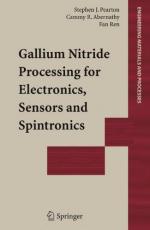|
This section contains 373 words (approx. 2 pages at 300 words per page) |
Gallium is the third element in Group 13 of the periodic table, a group of elements sometimes known as the aluminum family. It has an atomic number of 31, an atomic mass of 69.72, and a chemical symbol of Ga.
Properties
Gallium is a soft, silvery metal with a shiny surface. It is quite soft and can be cut with a knife. It has a very low melting point of only 85.5°F (29.7°C), such that a sample of gallium will melt if held in a person's hand (body temperature is about 98.6°F or 37°C). Gallium's boiling point is about 4,350°F (2,400°), and its density is 5.9037 grams per cubic centimeter.
Chemically, gallium is a fairly reactive element. It combines with most non-metals at high temperatures and reacts with both acids and alkalis.
Occurrence and Extraction
Gallium is a moderately abundant element in the Earth's crust, occurring in a concentration of about 5 parts per million. The world's largest producers of the element are Australia, Russia, France, and Germany. The United States produces no gallium. Pure gallium metal can be extracted from its ores by converting the ore first to gallium oxide (Ga2O3) and then electrolyzing the product: 2Ga2O3 -- electric current 4Ga + 3O2.
Discovery and Naming
The existence of an element with atomic number 31 was predicted by the Russian chemist Dmitri Mendeleev, creator of the periodic table. Mendeleev noted an empty place in the periodic table he constructed in position #31 and listed the properties of the element he expected to be present in that position. In 1875, the French chemist Paul-Émile Lecoq de Boisbaudran discovered the element and found that it had essentially the properties predicted by Mendeleev. Lecoq de Boisbaudran suggested the name gallium for the new element in honor of the ancient Latin name for France, Gallia.
Uses
About 95% of all gallium produced is used to make a single compound, gallium arsenide (GaAs). This compound is used in devices that convert electric current to light. For example, the lighted numbers on hand-held calculators are produced by a device known as a light-emitting diode (LED), made from gallium arsenide. Gallium arsenide is also used in lasers, such as those present in a compact disc player, in transistors, and in photovoltaic cells.
|
This section contains 373 words (approx. 2 pages at 300 words per page) |


